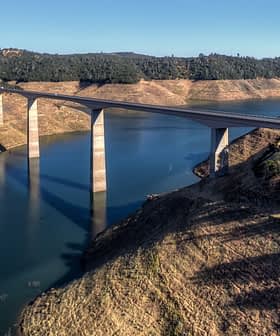The increasingly-pronounced effects of climate change are having a negative impact on Croatian olive growing, according to researchers at the University of Zagreb.
Lidija Srnec, a meteorologist and head of the university’s climate monitoring department, said climate change in Croatia has resulted in heat waves becoming more frequent and lasting longer.
We have not yet reached the point of no return, but agreements are needed as soon as possible.
She added that at least three heat waves this summer affected the country’s long-term drought and exacerbated a large number of wildfires.
According to firefighting officials in the country, Croatia experienced 14,241 fires in the first 10 months of 2022, a 47-percent increase compared to the same period in 2021.
See Also:Despite Drought, Croatia Enjoys Fruitful HarvestAdditionally, the amount of land burned by wildfires reached 56,540 hectares, a 135-percent increase compared to last year.
Olive groves in Istria and Dalmatia, the country’s two most significant olive-growing regions, were among the areas burned this year.
In addition to drought and fires, there is even greater concern regarding rising sea levels in the Adriatic. According to existing models, the Adriatic could rise from 32 to 65 centimeters by the end of the century.
“We have not yet reached the point of no return, but agreements are needed as soon as possible,” said Julije Domac, a climate and energy adviser to Croatia’s president.
He added that significant challenges await global leaders at COP27 in Egypt as they seek to mitigate the impacts of climate change and limit the rise in global temperatures to 1.5 ºC compared to the pre-Industrial average.
If the sea level rises by a half-meter, Croatia will lose more than 100 million square meters of coastline. More than a dozen cities and urban areas on Croatia’s coastal islands and the mainland, including Split, the country’s second-largest city, would also be at risk.
Along with islands and coastal cities, important agricultural areas on the coast would also be at risk, including the Neretva River Valley and Ravni Kotari plain, which are home to many olive groves.
Officials warned the damage to olive oil production would be immeasurable. Moreover, they added the loss of olive trees might further exacerbate the issue, as the trees are known to be significant carbon sinks.
“Some studies say that we are the third-most exposed European country [to the impacts of climate change],” Domac said. “Therefore, Croatia has to work hard, primarily on adaptation to climate change.”
Mirko Orlić, a geophysicist at the Croatian Academy of Sciences and Arts, thinks this urgency must be on full display from Croatian and global leaders in Egypt.
“Two things remain undefined,” he said. “The first is what each country needs to do to reach the 1.5- to 2‑degree target. The problem is that it was never agreed to check whether the goals are being met. So there are promises, but there is no verification mechanism.”









